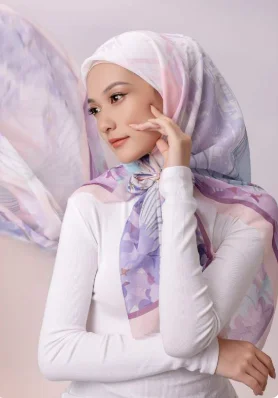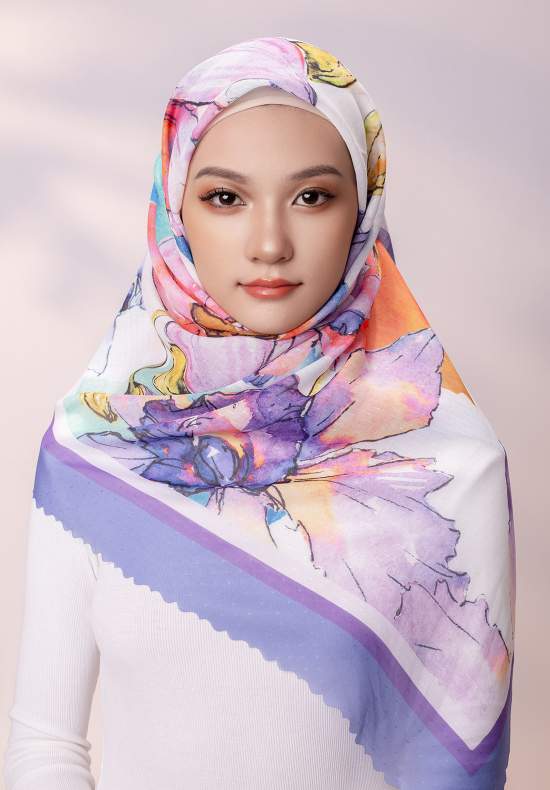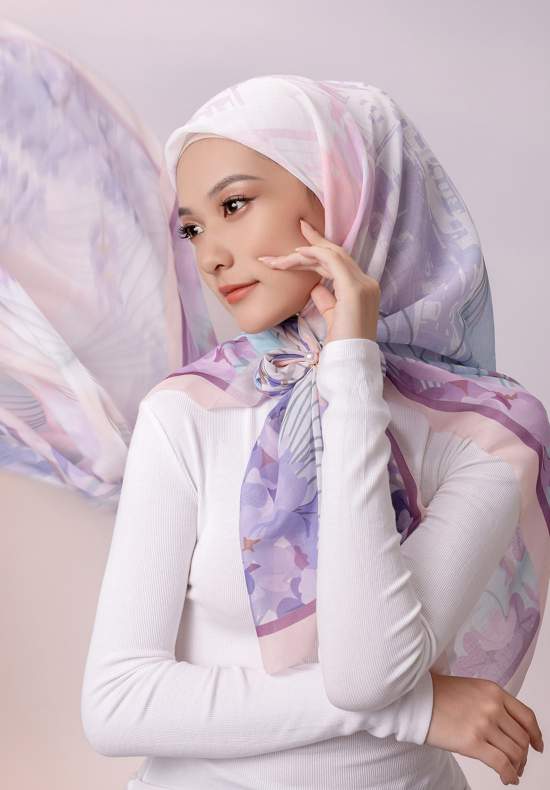When did Muslim women start wearing headscarves? The intersection of age and faith
Views :
Update time : 2024-10-23
Introduction: The close connection between headscarves and Muslim beliefs
In Islamic culture, the headscarf (Hijab) is not only an external dress, but also a manifestation of faith and lifestyle. For many Muslim women, wearing a headscarf is a religious responsibility, a symbol of modesty and loyalty to faith. However, the wearing of headscarves is not imposed on all women from the beginning, but is closely related to various factors such as age, development, and cultural traditions. This article will explore when Muslim women start wearing headscarves and the religious, cultural, and social influences behind them.
When to start wearing headscarves: the influence of religious doctrines and cultural practices
1. Guidance in religious doctrines
According to Islamic doctrines, the Quran requires adult women to cover their hair and certain parts of their bodies in public to ensure their modesty and modesty. Therefore, the wearing of headscarves is closely related to the transition of girls from childhood to adulthood. Islam does not clearly stipulate that girls must start wearing headscarves at a specific age, but uses the physiological "puberty" as the criterion for judgment.
Puberty is generally considered an important turning point in physical development, marking the transition from a child to an adult. For girls, the typical sign of puberty is the menarche. According to Islamic law, once a girl reaches puberty, she is considered to have reached the standard of adulthood and needs to assume some religious responsibilities, including wearing a headscarf.
Therefore, the specific age at which girls start wearing headscarves varies from individual to individual, usually between 9 and 14 years old, which is closely related to the time of physiological maturity.
2. Diversity of cultural practices
Although Islamic teachings provide religious guidance for wearing headscarves, Muslim communities in different regions have different practices on when to start wearing headscarves. In some conservative Islamic countries or families, girls may be encouraged to wear headscarves at a younger age, and even learn how to wear headscarves from the age of 5 or 6. This is often an educational process designed to familiarize them with and adapt to future religious responsibilities.
In contrast, in some more open Muslim communities, parents may give girls more freedom and allow them to decide for themselves when to start wearing headscarves. For these families, wearing a headscarf is not only a religious responsibility, but also a form of self-expression, so parents encourage girls to make this decision independently when they are psychologically mature, rather than forcing them to do so.
This difference in cultural practices reflects the diversity of Muslim communities around the world and how family, society and religion work together to influence the age at which girls wear headscarves.
The impact of social and family factors on the age of wearing headscarves
1. The impact of family on girls
The family is the main force in determining when girls start wearing headscarves. In conservative Muslim families, parents may instill the concept of religious obligations in their daughters early and teach them the importance of headscarves from an early age. In these families, headscarves are not only a personal religious expression, but also regarded as a responsibility and honor for the entire family. Therefore, girls may start wearing headscarves at a younger age and gradually develop this religious habit.
However, in some more open or secular Muslim families, parents may tend to let their daughters choose when to start wearing headscarves. Parents may demonstrate the importance of headscarves in daily life as role models, but will not force their daughters to comply. Such families pay more attention to personal choice and freedom, and believe that faith should be voluntary from the heart rather than external coercion.
2. Influence of social environment
The age at which girls start wearing headscarves may also be affected by the social environment in which they live. For example, in Muslim-dominated societies, wearing headscarves is a common and socialized behavior. Girls will see their female relatives, friends and teachers wearing headscarves from an early age. This environment makes them start wearing headscarves earlier under the pressure of cultural identity.
However, in non-Muslim mainstream societies, especially Western countries, girls wearing headscarves may face certain social pressures or prejudices. In such an environment, girls may postpone wearing headscarves or choose not to wear headscarves to avoid discrimination. These social pressures may affect the decision of families and girls on when to start wearing headscarves, and even cause some families to abandon this tradition.
The relationship between psychology and headscarf wearing during adolescence
Adolescence is a critical period of transition from childhood to adulthood, accompanied by great physiological and psychological changes. For Muslim girls, adolescence not only marks physical maturity, but also means that they need to take on more religious responsibilities, including starting to wear headscarves.
However, psychological changes during adolescence often make the decision to wear headscarves more complicated. Adolescent girls are usually more concerned about their self-image and eager to integrate into their peer groups. In some cases, wearing a headscarf may make girls feel different and even face questions and pressure from their peers.
As a result, many Muslim girls go through a period of self-exploration when they enter puberty, reflecting on their beliefs and their views on the headscarf. Although religious obligations require them to wear a headscarf, many hope that this decision can be based on their own inner choice rather than purely religious norms.
The global impact of headscarf wearing
In today's globalized world, the age issue of wearing a headscarf has become more complicated in different cultural, national and religious contexts. As the global Muslim community becomes increasingly diverse, the wearing of a headscarf is not only a reflection of personal beliefs, but has also gradually become a symbol of identity and cultural exchange.
In Western countries, more and more Muslim girls have begun to wear headscarves in public to express their loyalty and pride in their beliefs. This phenomenon also shows that the headscarf is not just a religious symbol, but also an expression of self-identity and cultural pride for Muslim women around the world.
At the same time, the issue of headscarves has also triggered a global discussion on religious freedom and personal choice. In many Western countries, women who wear headscarves sometimes face social prejudice or discrimination, which reflects the complex attitudes towards Muslim culture around the world.
Conclusion: Multidimensional Considerations of Headscarf Wearing
There is no single answer to when Muslim girls should start wearing headscarf. It is not only closely related to religious teachings, but also influenced by family, society, culture and personal choices. Although the Quran requires women to begin to assume religious responsibilities during adolescence, the actual time of wearing headscarf varies according to cultural, family and social backgrounds.
In modern society, the wearing of headscarf has become an important symbol of personal belief, cultural identity and global dialogue. By understanding the diverse factors behind headscarf, we can better respect and tolerate the choices of Muslim women in different environments and better promote cross-cultural communication and understanding.




